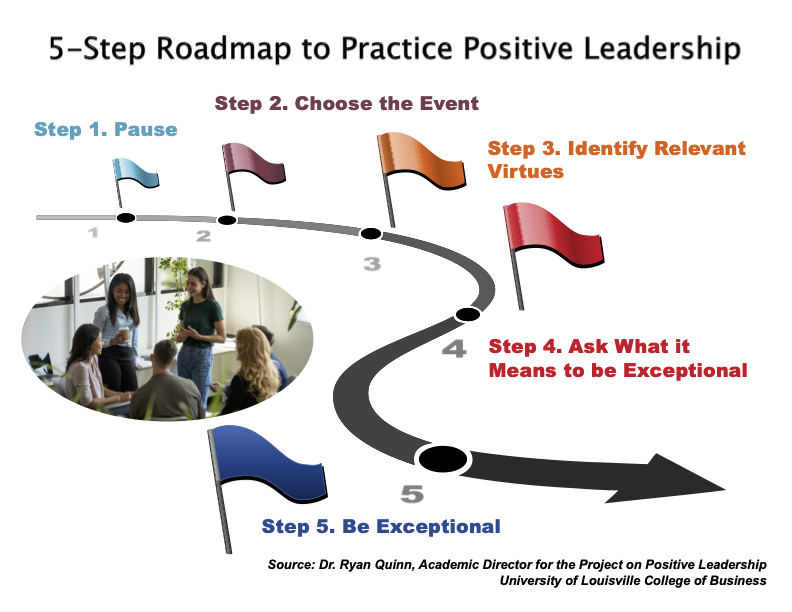As a leader, it can be challenging to navigate a constantly changing environment while maintaining a positive outlook. However, practicing positive leadership is crucial to creating a positive work culture and fostering employee engagement and productivity.
In my conversation with Dr. Ryan Quinn, Associate Professor and Academic Director for the Project on Positive Leadership at the University of Louisville College of Business, on a recent episode of my podcast “GGG Unleashed: Better Leaders, Better Workplaces”, we talked about a five-step roadmap for using positive leadership.
You can listen to the full episode here.
What is Positive Leadership?
Before we go into the steps, let’s recap how positive leadership is defined and why it makes such a difference in how teams and organizations function. According to Dr. Quinn, Positive Leadership is exhibiting exceptional, unusual, unexpected virtues that other people choose to follow because of how they feel elevated by those virtues.
Some of these unexpected virtues include courage, decisiveness, compassion, humility, inclusivity, resilience, and integrity. More importantly, it’s not about just ticking the box for each virtue, but committing to practice each of them at an exceptional level, so others want to follow that example.
But how do you get there? How do you make positive leadership a part of your leadership practice?
Steps to Practice Positive Leadership
The following steps, outlined by Dr. Quinn during our conversation, can be used by leaders at all levels to develop a more positive approach to leadership.
Step 1: Pause
The first step towards positive leadership is to pause. Taking a moment to pause and reflect provides the mental space needed to think differently about a situation or problem. When we are constantly running and reacting, we don’t have the clarity of mind needed to lead effectively. Pausing can be as simple as taking a few deep breaths, going for a walk, or setting aside a few minutes each day for mindfulness or meditation.
Step 2: Choose the Event
The second step towards positive leadership is to identify the next opportunity or design experiences where you can practice positive leadership. What meetings or one-in-one interactions are coming up? Where will your influence be felt?
Step 3: Identify Relevant Virtues
The third step towards positive leadership is to identify the relevant virtues for the event. Which virtues are relevant may change from situation to situation. Consider what virtues are most important for the event at hand and how you can exhibit those virtues in your leadership practice.
Step 4: Ask What it Means to be Exceptional
The fourth step towards positive leadership is to ask yourself what it would mean to be exceptional in those virtues you chose in Step 3. Visualize what you might say and do. What outcomes might you anticipate as a result? This step can provide valuable insights that may not have been apparent otherwise.
Step 5: Be Exceptional
Actually use that opportunity to practice exceptional virtues, then reflect on how it went. By acting on the insights realized in Step 4 and going beyond what someone might normally expect, you can inspire others. A trusted colleague or coach would be a great accountability partner.
My Challenge To You
Positive leadership is essential to creating a positive work culture and fostering employee engagement and productivity. Following this roadmap not only makes you a better leader, it inspires others to follow, as they aspire to grow their own influence and impact within your organization.
I challenge you to take action. Just look at the impact you can have! If you’re ready to elevate your leadership, or would like to bring an inspiring message to your conference or corporate event, let’s have a conversation. I’m here to help.


